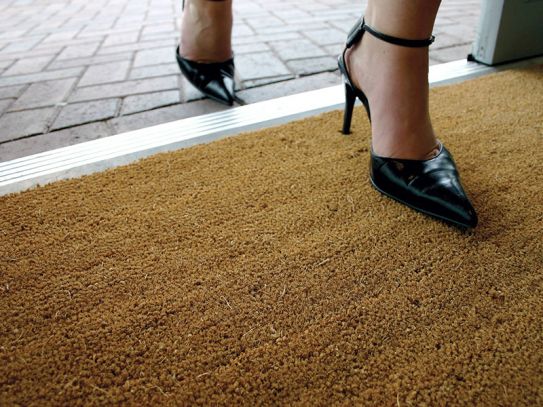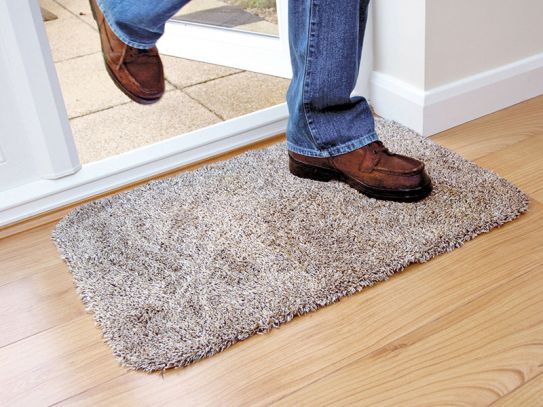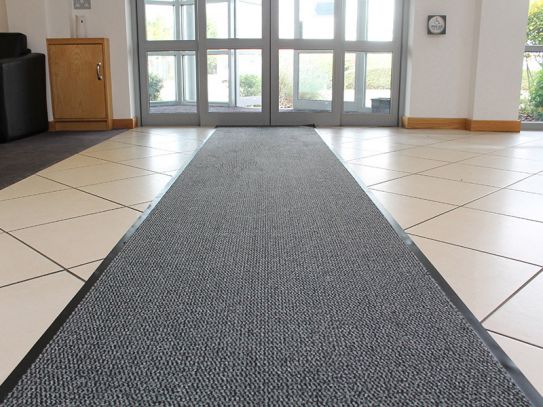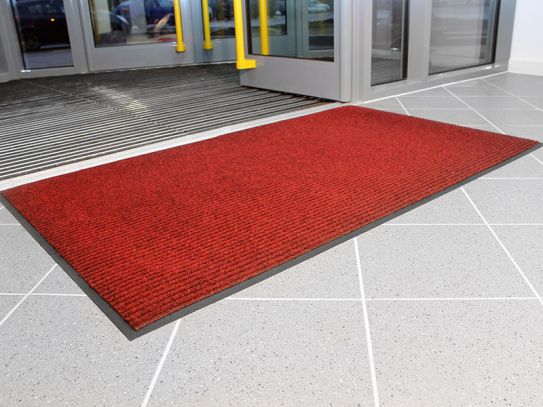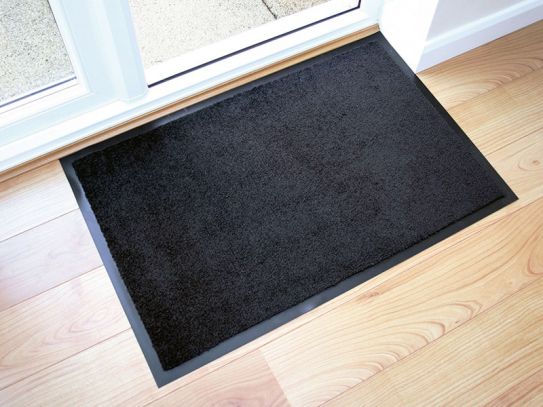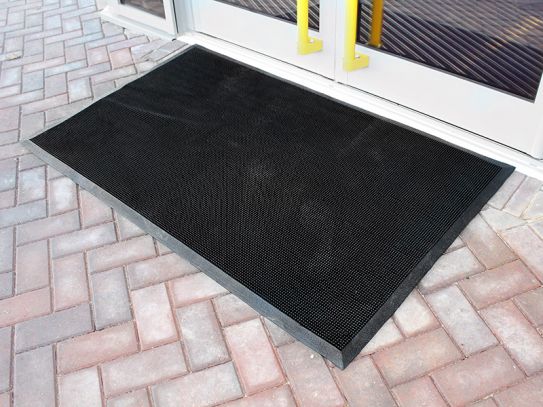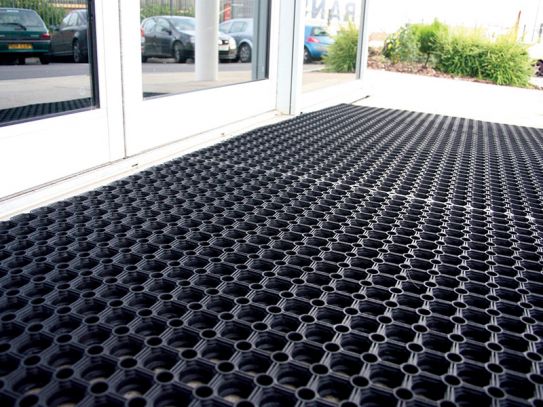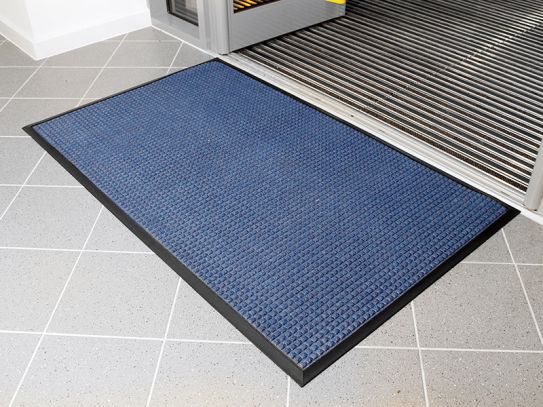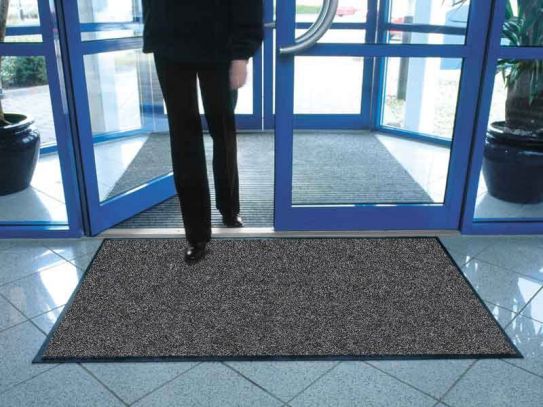Entrance Matting
Protect Your Building From Dirt And Moisture With Our Entrance Mats
Welcome to our range of entrance matting! Our mats are designed to protect your workplace and keep it looking clean and professional. We offer a variety of sizes and colours to choose from, so you can find the perfect fit for your space. Whether you need a waterproof mat for wet environments, a rubber mat for heavy traffic areas, or an industrial mat for high-use areas, we have you covered. Plus, our mats are suitable for both indoor and outdoor use, so you can protect your workplace from the elements. Shop our selection today and keep your workplace looking its best.
What Is Entrance Matting?
Entrance matting is a type of matting that is designed to be placed at the entrance of a building or other space. The purpose of entrance matting is to provide a surface that people can walk on when entering the space, and to remove dirt, debris, and moisture from their shoes. This helps to keep the interior of the building clean and safe, and can also prevent slips and falls. Entrance matting is commonly used in commercial and industrial buildings, as well as in residential homes.
What Are Some Common Uses For Entrance Matting?
Entrance matting is commonly used in a variety of settings, including commercial and industrial buildings, residential homes, and public spaces. Some common uses for entrance matting include:
- Protecting the interior of a building from dirt, debris, and moisture that can be tracked in on people's shoes
- Helping to prevent slips and falls by providing a safe, non-slip surface for people to walk on
- Enhancing the appearance of a space by providing a decorative or functional element at the entrance
- Helping to maintain the cleanliness and safety of a building by trapping dirt and moisture before it can spread throughout the space
- Providing a comfortable surface for people to walk on, which can help to reduce fatigue and discomfort
What Are The Different Types Of Entrance Matting?
There are many different types of entrance matting available, and the type that is best for a particular application will depend on the specific needs of the space. Some common types of entrance matting include:
- Scraper mats: These mats have a rough surface with small ridges or bumps, which are designed to scrape dirt, debris, and moisture off of shoes. They are often made of rubber or a similar material, and are commonly used in outdoor spaces or in areas with heavy foot traffic.
- Wiper mats: These mats have a dual-layer construction, with a top layer that is designed to wipe moisture and debris off of shoes, and a bottom layer that is designed to absorb moisture and prevent it from spreading. They are often made of a combination of synthetic materials, and are commonly used in indoor spaces or in areas with medium foot traffic.
- Absorbent mats: These mats are designed to absorb moisture and trap dirt and debris. They are often made of a synthetic material that is highly absorbent, and are commonly used in indoor spaces or in areas with low to medium foot traffic.
- Specialty mats: In addition to the types of mats mentioned above, there are also many other types of entrance matting available for specific applications. For example, there are mats designed for use in wet environments, mats designed for use in areas with heavy equipment, and mats designed for use in areas with specific safety concerns.
What Are The Key Features To Consider When Choosing Entrance Matting?
When choosing entrance matting, there are several key features to consider in order to ensure that you select the right mat for your space. Some of the most important factors to consider include:
- Size: Entrance matting is available in a range of sizes, so it is important to choose a mat that is the right size for the entrance of your building. A mat that is too small will not be effective at trapping dirt and moisture, while a mat that is too large may be difficult to use or may interfere with the flow of foot traffic.
- Material: The material of the mat is also important, as different materials have different properties and are suitable for different applications. For example, rubber mats are often used in outdoor spaces or in areas with heavy foot traffic, while synthetic mats are often used in indoor spaces or in areas with medium foot traffic.
- Surface texture: The surface texture of the mat is also important, as it will determine how effectively the mat is able to remove dirt, debris, and moisture from shoes. A mat with a rough, scraper-like surface will be more effective at removing these substances than a mat with a smooth surface.
- Absorption: The absorption of the mat is another important factor to consider, as it will determine how much moisture the mat is able to trap. A highly absorbent mat will be more effective at preventing moisture from spreading throughout the building than a mat with low absorption.
- Durability: The durability of the mat is also important, as it will determine how long the mat will last and how well it will hold up to heavy use. A durable mat will be able to withstand frequent use and will not easily become worn or damaged.
- Style: Finally, the style of the mat is also important, as it can help to enhance the appearance of the entrance of your building. Entrance matting is available in a variety of styles, so it is important to choose a mat that fits with the overall aesthetic of your space.
Can Entrance Matting Be Used In Wet Environments?
Yes, entrance matting can be used in wet environments, such as in outdoor spaces or in areas where there is a risk of water or moisture on the floor. In fact, some types of entrance matting are specifically designed for use in wet environments, and are able to effectively trap water and prevent it from spreading. Examples of entrance matting that is suitable for use in wet environments include scraper mats, wiper mats, and absorbent mats. It is important to choose the right type of mat for the specific needs of the space, and to properly maintain the mat in order to keep it effective at trapping water and preventing it from spreading.
How Do I Maintain Entrance Matting?
Proper maintenance of entrance matting is important in order to keep the mat in good condition and ensure that it continues to effectively trap dirt, debris, and moisture. Here are some tips for maintaining entrance matting:
- Regularly clean the mat: Entrance mats should be regularly cleaned in order to remove dirt, debris, and moisture that has been trapped in the mat. This can be done using a vacuum, a broom, or a hose, depending on the type of mat and the amount of dirt and debris that has accumulated.
- Remove heavy debris: In addition to regular cleaning, it is also important to periodically remove heavy debris from the mat, such as rocks, sticks, or other large objects that may be stuck in the mat. This can be done by hand or with a tool, such as a rake or a shovel.
- Dry the mat thoroughly: After cleaning the mat, it is important to allow it to dry thoroughly in order to prevent mould or other growth from developing. This can be done by allowing the mat to air dry, or by using a towel or a mop to remove excess moisture.
- Protect the mat from the elements: In outdoor spaces, it is important to protect the mat from the elements, such as sunlight, wind, and rain. This can be done by placing the mat in a covered area or by using a mat cover to protect it from the weather.
- Repair or replace the mat as needed: Over time, entrance mats may become worn or damaged, and it may be necessary to repair or replace the mat in order to maintain its effectiveness. If a mat is heavily worn or damaged, it may be more cost-effective to replace it rather than trying to repair it.
What Safety Considerations Should Be Taken Into Account When Using Entrance Matting?
There are several safety considerations to keep in mind when using entrance matting, in order to ensure that the mat is used properly and does not create any hazards. Some important safety considerations to keep in mind include:
- Proper installation: Entrance matting should be installed properly in order to ensure that it is effective at trapping dirt, debris, and moisture, and to prevent it from becoming a tripping hazard. The mat should be placed on a flat, level surface, and should be securely anchored to the floor to prevent it from shifting or moving.
- Non-slip surface: Entrance matting should have a non-slip surface in order to prevent slips and falls. Non-slip surfaces are particularly important in wet environments, or in areas where there is a risk of water or moisture on the floor.
- Maintenance: Entrance matting should be regularly cleaned and maintained in order to ensure that it continues to effectively trap dirt, debris, and moisture, and to prevent it from becoming worn or damaged. Mats that are heavily worn or damaged may be a tripping hazard, and should be repaired or replaced as needed.
- Proper use: Entrance matting should be used properly in order to ensure that it is effective at trapping dirt, debris, and moisture, and to prevent it from becoming a tripping hazard. This means making sure that people walk on the mat when entering the space, and removing any heavy debris that may be stuck in the mat.
- Safety warnings: Some types of entrance matting may have safety warnings or instructions that should be followed in order to ensure safe use. For example, some mats may be flammable, or may have other safety hazards that should be considered. It is important to read and follow any safety warnings or instructions that are provided with the mat.
Are There Any UK Or European Industry Standards Or Regulations That Apply To Entrance Matting?
There are no specific UK or European industry standards or regulations that apply specifically to entrance matting. However, there are general regulations and standards that apply to flooring and matting in the workplace, which may be relevant to entrance matting. Some examples of these regulations and standards include:
- The Workplace (Health, Safety and Welfare) Regulations 1992: These regulations specify requirements for the maintenance and cleanliness of workplaces, including requirements for flooring and matting.
- The Provision and Use of Work Equipment Regulations 1998: These regulations specify requirements for the use of work equipment, including requirements for the safe use of flooring and matting.
- The Management of Health and Safety at Work Regulations 1999: These regulations specify requirements for the management of health and safety in the workplace, including requirements for assessing and controlling risks associated with flooring and matting.
- The Health and Safety (Sharp Instruments in Healthcare) Regulations 2013: These regulations specify requirements for the safe use of sharp instruments in healthcare settings, including requirements for flooring and matting in areas where sharp instruments are used.
- The ISO 9001:2015 standard: This is an international standard for quality management systems, and includes requirements for the design, production, and installation of flooring and matting products.
In addition to these regulations and standards, there may also be other specific requirements that apply to entrance matting in certain industries or settings, such as requirements for fire resistance or slip resistance in certain environments. It is important to familiarise yourself with any relevant regulations and standards that may apply to your use of entrance matting.
